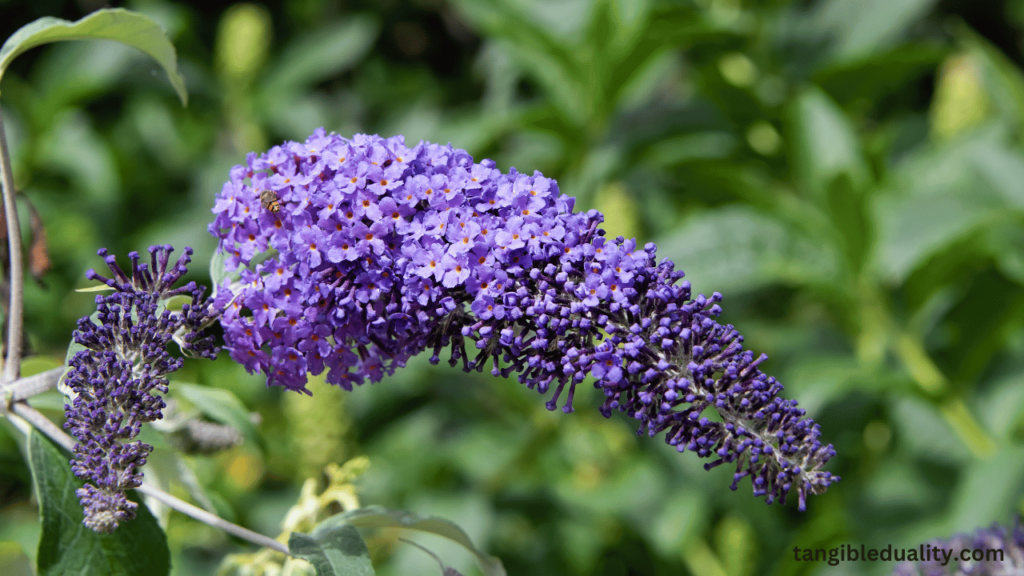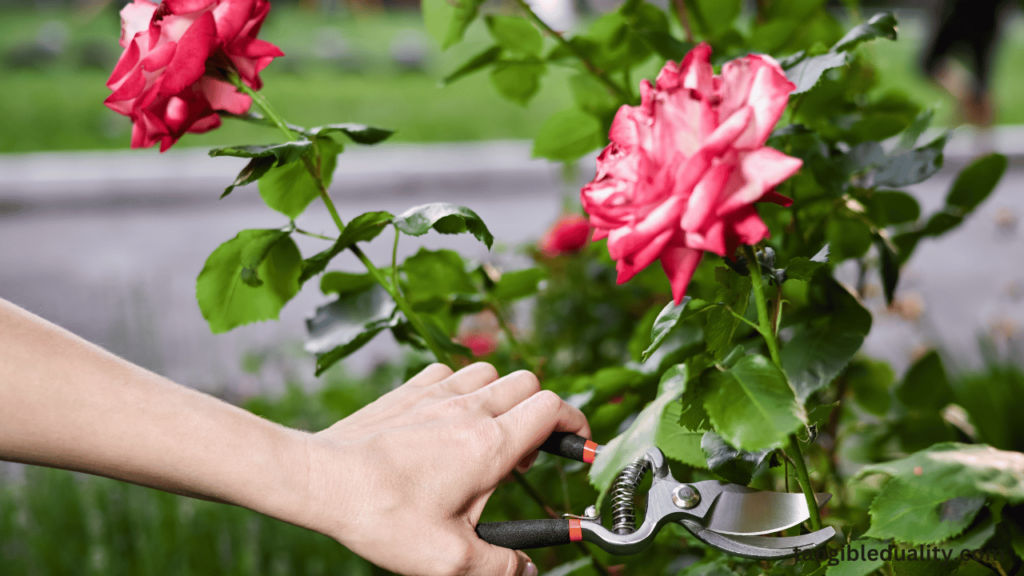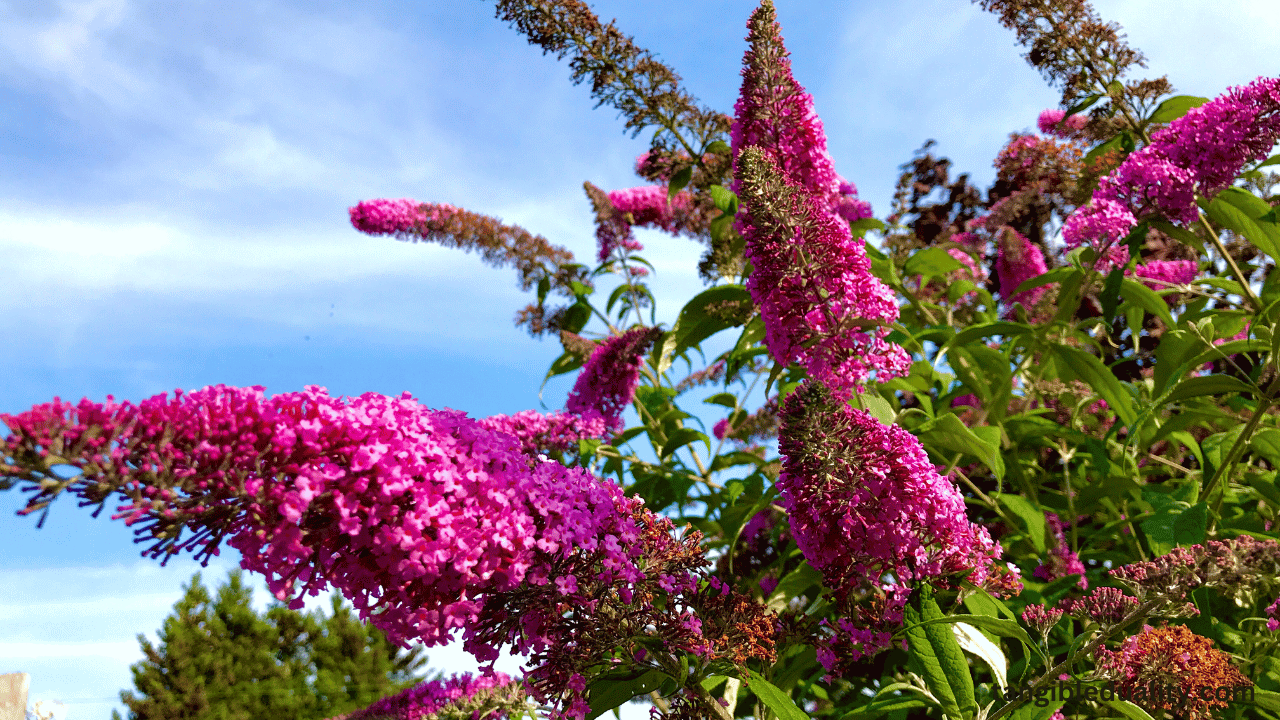Because of their vivid blossoms and delicious perfume, butterfly bushes are a popular and lovely addition to any garden. They attract hummingbirds and butterflies to the garden. However, it is vital to prune your butterfly bushes appropriately to guarantee that they will continue to survive and flourish.
This vital guide provides all the information you need to prune your butterfly bushes correctly for optimal development and longevity.
When butterfly bushes are pruned, they must not only maintain their shape and size but also promote healthy growth and encourage the creation of more blooms.
In addition to enhancing the overall appearance of your garden, you can avoid disease and pest infestations by removing old and dead wood from the bush and shaping it to allow for more excellent air circulation and sunshine exposure.
This article will provide information on the optimal time to prune your butterfly bushes, the tools you will require for the task, and detailed instructions on how to prune to achieve the highest possible success.
This indispensable guide will assist you in maintaining the overall appearance of your butterfly bushes and ensuring that they continue to flourish in your garden for many years to come, regardless of whether you are an experienced gardener or just beginning one.
Butterfly bushes are popular among gardeners who want to attract butterflies and enjoy lovely blossoms in their outdoor spaces. However, these shrubs require the appropriate maintenance and trimming techniques to ensure that they continue to flourish and produce an abundance of flowers.
This tutorial will cover everything you need about caring for butterfly bushes to develop a flourishing garden.

Understanding the Needs of a Butterfly Bush
Before diving into pruning techniques, it is crucial to understand the basic needs of a butterfly bush. These shrubs require full sun and well-drained soil to thrive. They are relatively low-maintenance but benefit from regular pruning to encourage new growth and blooming.
Proper Pruning Techniques for Healthy Growth
Pruning butterfly bushes is essential for maintaining their health and promoting abundant blooming. The best time to prune a butterfly bush is early spring before new growth begins. Cut back the old wood to encourage new shoots and flower buds to form.
Removing dead or diseased branches back to the ground is crucial for the plant’s overall health.
Common Problems and Solutions for Butterfly Bush Care
One common issue that gardeners face is overgrown or leggy butterfly bushes. To address this, you can return the shrub to the root crown to rejuvenate it and promote new growth.
Regular mulching and fertilizing can also help prevent issues like spider mites and other pests that may affect the plant.
Pruning Tips for Maximizing Bloom
When is the Best Time to Prune a Butterfly Bush?
To maximize blooming, butterfly bushes must be pruned at the right time. Early spring is the ideal time for pruning, as this allows the shrub to focus its energy on producing new flowers rather than maintaining old foliage. Cutting back to the ground stimulates the growth of new wood and flower clusters.
How to Encourage More Flowers with Proper Pruning
Proper pruning techniques can help encourage more flowers on a butterfly bush. You can ensure a more abundant bloom by cutting back old wood and promoting new shoots. Removing spent flower clusters can redirect the plant’s energy into producing new blooms.
Dealing with Overgrown or Leggy Butterfly Bushes
If your butterfly bush has become overgrown or leggy, don’t worry. Pruning it back to the ground and providing proper care during the growing season can help it bounce back. Growing butterfly bushes in full sun and well-drained soil will promote healthy growth and abundant flowering.
Planting and Growing Butterfly Bushes
Choosing the Right Location for Planting
Select a location with full sun and well-drained soil when planting butterfly bushes. These shrubs prefer dry conditions and may suffer if planted in areas with poor drainage.
Appropriate spacing between plants allows for proper air circulation and helps prevent diseases.
Caring for Butterfly Bushes During the Growing Season
During the growing season, monitoring your butterfly bushes for signs of stress or disease is essential.
Regular watering, mulching, and fertilizing can help keep the plants healthy and blooming. Pruning back to the root crown in winter prepares the shrub for new growth in the spring.
Preventing Plant Diseases in Butterfly Bushes
To prevent common plant diseases in butterfly bushes, such as powdery mildew or leaf spot, ensure proper air circulation around the foliage. Avoid overhead watering, as this can promote fungal growth.
Pruning out any affected branches and maintaining a clean garden space can help prevent the spread of disease.

Types of Butterfly Bush and Their Characteristics
Exploring Different Varieties of Butterfly Bushes
Many different types of butterfly bushes are available, each with unique characteristics. Varieties like Buddleia davidii offer a wide range of flower colors and fragrances, making them famous for butterfly gardens.
Choosing the suitable butterfly bush for your garden depends on your preferences and climate.
Identifying the Best Butterfly Bush for Your Garden
When selecting a butterfly bush for your garden, consider mature size, flower color, and growth habit.
Some varieties grow taller than others and may require more space to thrive. Native plants are often a good choice for attracting local butterflies and supporting the ecosystem.
Comparing Flower Colors and Fragrances of Butterfly Bushes
Butterfly bushes come in various flower colors, including purple, pink, white, and blue. The fragrance of the flowers can also vary, with some varieties emitting a sweet, floral scent that attracts butterflies and other pollinators.
Mixing different colors and fragrances can create a visually stunning butterfly garden.
Benefits of Butterfly Bushes in a Butterfly Garden
Attracting Butterflies with Butterfly Bushes
One of the main benefits of planting butterfly bushes is their ability to attract butterflies to your garden. The nectar-rich flowers provide a food source for adult butterflies, while the dense foliage offers shelter and nesting sites for caterpillars.
Creating a diverse garden with native plants further enhances its appeal to butterflies.
Creating a Thriving Butterfly Habitat with Buddleia
You can create a thriving habitat for these beautiful insects by including butterfly bushes in your garden. Butterflies are essential pollinators that help maintain biodiversity and ecosystem balance.
Providing a variety of nectar-rich plants ensures a continuous food source for adult butterflies throughout the growing season.
Tips for Designing a Butterfly-Friendly Garden with Butterfly Bushes
Designing a butterfly-friendly garden involves selecting plants that attract butterflies at various life stages. Incorporating host plants for caterpillars and nectar plants for adult butterflies ensures a balanced ecosystem.
Butterfly bushes can serve as focal points in your garden, attracting pollinators and adding beauty with their colorful blooms.
Conclusion
To maintain the health and vitality of your butterfly bushes in your garden, you must become proficient in pruning. If you follow the main advice presented in this guide, you will be able to ensure that your garden’s ecosystem is healthy, that there will be many blooms, and that the growth will be optimal.
Remember to prune your butterfly bushes in the late winter or early spring to encourage new growth. This will help you achieve your goal of fostering new development. Any broken or dead branches will be removed during this process, and the plant will be further shaped.
In addition, deadheading regularly throughout the growing season prevents the plant from becoming overgrown and encourages it to continue blossoming.
Adoption of appropriate trimming practices by your butterfly bushes will improve the aesthetic appeal of your garden landscape and attract butterflies and other pollinators to it.
Get ready to embark on this fantastic journey. The journey to a flourishing garden filled with the fascinating beauty of butterfly bushes is about to begin. Roll up your sleeves, grab your pruning shears, and get ready to embark on this fantastic adventure.
FAQs
Q: What is the best time to prune butterfly bushes?
A: The best time to prune butterfly bushes is in late winter or early spring before new growth begins.
Q: How much of the plant should I prune?
A: It is recommended to prune butterfly bushes back to about 2- to 3-inch above the ground.
Q: Can I prune my butterfly bush during the growing season?
A: It is not ideal to prune your butterfly bush during the growing season, as it may disrupt the blooming cycle.
Q: How do I prune a butterfly bush that has died back to the ground?
A: If your butterfly bush has died back to the ground, you can simply cut it back to the base of the plant and it should sprout new growth.
Q: Are butterfly bushes perennials?
A: Yes, butterfly bushes are considered perennials, meaning they come back year after year.
Q: Do butterfly bushes need special care in winter?
A: Butterfly bushes are relatively cold-hardy, but it is advisable to protect the roots with a layer of mulch during winter.
Q: Can I plant butterfly bushes in pots?
A: Yes, you can plant butterfly bushes in pots, but ensure that they are not planted too deeply and have proper drainage.
Q: What type of garden do butterfly bushes thrive in?
A: Butterfly bushes thrive in butterfly gardens or cottage gardens where they can attract pollinators and add color to the landscape.

